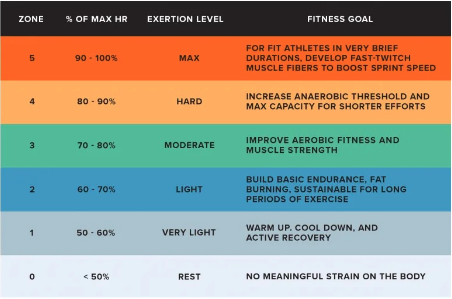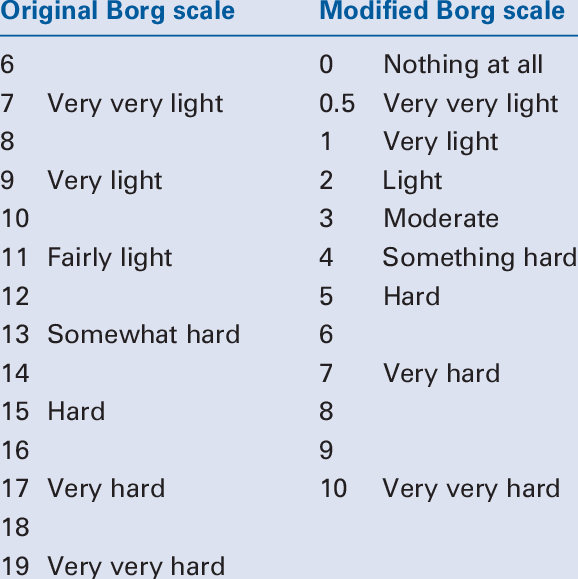Table of Contents
- What is Zone 2 Training?
- The Science Behind Zone 2 Training
- Zone 2 Training and Longevity Markers
- Cardiovascular Health Benefits
- Musculoskeletal Health and Zone 2 Training
- Metabolic Advantages
- Cognitive Function and Brain Health
- How To: Zone 2 Training for Longevity
- Potential Risks and Considerations
- To summarize
- Frequently Asked Questions
If you want to improve longevity and quality of life, Zone 2 training is the missing piece of the puzzle you didn’t know you needed.
For years, endurance athletes, such as professional cyclists and marathon runners have used Zone 2 training to become faster and better athletes. And you can do the same, while also obtaining many longevity benefits.
In this article, we explain:
- What Zone 2 training is
- What the benefits of Zone 2 training are
- How to start Zone 2 training and incorporate it into your lifestyle
- How to measure your progress
NMN + RESVERATROL
Cellular NAD+ booster with ultra‑pure NMN and Resveratrol, at research‑backed doses.*
What is Zone 2 Training?
Zone 2 training is low-moderate intensity exercise, typically performed anywhere between 60-70% of your maximum heart rate [1]. Training in Zone 2 improves aerobic and cardiovascular fitness with minimal strain on your body.
So, how do you calculate your Zone 2 intensity? The most basic method is to subtract your age from 220. This provides your theoretical max heart rate. 60-70% of your max heart rate should be your Zone 2 training intensity.
For example, if you’re 40 years old, you have a theoretical max heart rate of 180 (220-40).
60-70% of 180 is 108-126 BPM.
For more heart rate training zones, check out the diagram below. (Image Source)
(Image Source)
If you want to get a little more advanced, you can use a lactate meter to determine your blood lactate. If using this method, your lactate concentration should fall between 1.7-1.9 mmol/l.
The Science Behind Zone 2 Training
Zone 2 training facilitates many physiological effects on the body, from metabolic adaptations to cardiovascular benefits. We explain these below.
Metabolic adaptations
Many metabolic adaptations take place when you train at Zone 2 intensity.
For starters, Zone 2 training optimizes fat oxidation. This is where the body breaks down fatty acids to produce energy, known as Adenosine triphosphate (ATP). Your body becomes better at using fat as a primary fuel source.
As you may already know, glycogen is the main fuel source stored in the muscles and the liver. However, these stores deplete quickly. Fat oxidation allows the body to use fat as fuel, whereas “glycogen sparing” is used for situations when it is needed the most, such as at the end of an endurance event when you have to dig deep.
While we’re on the topic of energy, NAD+ levels have been linked with aging and age-related conditions. NMN resveratrol can help regulate the production of NAD+, providing you with more energy throughout the day while potentially helping to delay aging.
Mitochondrial benefits
If you remember anything from your science lessons, let it be that mitochondria are the powerhouse of the cells.
Training at Zone 2 increases the total number of mitochondria and makes existing mitochondria more efficient. This helps you sustain prolonged exercise with less fatigue.
Impact on cardiovascular system
Your cardiovascular fitness and health will improve with Zone 2 training. You will also see numerous adaptations, including:
A stronger heart (particularly the left ventricle), helps pump blood quicker around the body
Improved capillarization, which increases blood flow to the muscles for sustained aerobic efforts
A lower resting heart rate, which is a sign of excellent cardiovascular fitness
Zone 2 Training and Longevity Markers
Aerobic exercise and Zone 2 training are associated with longevity markers, i.e., living longer and with a higher quality of life. Below, we have gathered together the impact zone 2 training has on various longevity markers.
VO2 Max
VO2 Max is the maximal amount of oxygen your body can use during intense exercise. Zone 2 exercise increases the size and number of mitochondria, which, in turn, improves VO2 Max.
A high VO2 max score and high levels of overall cardiovascular fitness are significantly related to longevity and a strong predictor of lifespan [2].
Insulin sensitivity
Zone 2 training improves insulin sensitivity—the body becomes more efficient at regulating blood glucose levels.
From a longevity standpoint, improved insulin sensitivity can help prevent or manage conditions such as metabolic syndrome and type 2 diabetes.
Inflammation markers
Inflammation markers are blood tests that can detect inflammation in the body, mostly caused by diseases, such as cancer and auto-immune conditions. Chronic inflammation plays a significant role in accelerating the aging process.
Aerobic exercise, including Zone 2 training, may have a positive effect on reducing various inflammation markers, including CRP, TNF-α, and IL-6 in middle-aged and older adults, reports one study [3]. Consider adding a supplement such as Spermidine for potential further neuroprotective and anti-inflammatory properties. NMN supplementation may also be useful for critical cell function.
Furthermore, Zone 2 training helps produce anti-inflammatory cytokines—these help counter the effects of pro-inflammatory cytokines to prevent excess inflammation in the body.
Telomere length
Telomeres are protective caps located at the end of chromosomes and they shorten over time. They shorten due to aging and are also associated with age-related diseases.
One study investigated the chronic and acute effects of endurance training on telomere length (TL). Results showed that chronic endurance training may provide protective effects on TL, potentially helping to combat and slow down age-related diseases [4].
Cardiovascular Health Benefits
We’ve already mentioned a few of the cardiovascular health benefits, but there’s more to unpack.
Zone 2 training improves heart health and function. The left ventricle grows stronger, pumping more blood with less effort around the body.
Regular cardiovascular exercise can also reduce the risk of cardiovascular diseases, such as heart disease, type 2 diabetes, and stroke.
Moreover, aerobic exercise also improves endothelial function— The endothelium the layer of cells within your blood vessels that separates the contents of blood from your cells. Dysfunction of the endothelial layer can cause a whole host of cardiovascular related health problems.
Finally, strengthening the heart and the cardiovascular system helps regulate blood pressure correctly. This means your heart is not working too hard and you’re less likely to damage blood vessels and several essential organs.
NMN + RESVERATROL
Cellular NAD+ booster with ultra‑pure NMN and Resveratrol, at research‑backed doses.*
Musculoskeletal Health and Zone 2 Training
Zone 2 produces less strain on the body, including the joints, than other, more intense training zones. Likewise, weight-bearing exercises, such as running, can slow bone loss and improve bone density [5].
Likewise, training in Zone 2 will improve your muscular endurance—this is how long your muscles can sustain exercise. These adaptations take place because your muscles become more efficient at using oxygen when exercising. Additionally, the improved aerobic capacity and oxygen delivery efficiency carry over to your strength training. You’re less likely to be short of breath, especially when training large body parts that require more oxygen, such as the legs and the back.
As we age, we lose muscle mass and strength—this is known as sarcopenia. The decline of skeletal muscle with age is one of the most important causes of functional decline in older adults [6]. Zone 2 training can reduce the risk of sarcopenia with aging, improving longevity as we age.
Metabolic Advantages
As previously mentioned, Zone 2 training increases fat oxidation. This helps use fat as a fuel source, which can be a tool for weight management. It also provides metabolic flexibility, allowing your body to switch between energy sources based on carbohydrates and fat availability. Furthermore, increasing Zone 2 activity will burn more calories, making weight management more attainable.
Regular Zone 2 training helps improve insulin sensitivity, allowing for more efficient use of glucose by the muscles. It also reduces the risk of type 2 diabetes. Similarly, you will see cholesterol profile improvements, particularly reduced LDL cholesterol. This is typically referred to as the “bad cholesterol” which builds up the arteries and causes heart disease.
Cognitive Function and Brain Health
Zone 2 exercise increases oxygen and blood flow to the brain.
A 2017 study investigated the correlation between aerobic exercise and dementia risk [7]. Results found that the more active participants were, the less likely they were to get dementia. In particular, in the active participants, they found a larger hippocampus in the brain—this neural structure plays a major role in memory and learning. This possesses several neuroprotective effects as we age and also improves cognitive performance.
But what about mental health? A 2019 study found aerobic exercise had positive effects on self-esteem and mental health, particularly reducing anxiety and insomnia [8]. But no significant effects on sub-scales of depression and social functioning.
How To: Zone 2 Training for Longevity
Dr. Peter Attia, physician and researcher known for his work on longevity, recommends 3 hours a week of Zone 2 training. The 3 hours can be split into four 45-minute sessions. If you’re new to aerobic exercise, start with three 30-minute sessions a week. As you become more fit, you can increase the duration of your sessions. The more, the better. But don’t rush it.
If you also strength train, try and perform Zone 2 on non-lifting days. If that’s not possible, leave at least 6-8 hours between sessions to fully recover. It’s also a good idea to leave at least one full rest day a week for your body to recover and recuperate. You can still perform mobility, flexibility, and stretching on non-training days. If you don’t already include these, consider doing so to reduce your injury risk and improve performance.
Likewise, if performing high-intensity workouts, it’s best to do Zone 2 on different days. You can use these as “active recovery days.”
What are the best exercises for Zone 2?
There are numerous exercises suitable for Zone 2 training, including rowing, cycling, swimming, and running. However, the two most suitable are running and cycling.
With running and cycling, you can wear a heart rate monitor to target your Zone 2 effort. With cycling, you can also train using watts per kilo—this is your power output in relation to your weight. You can use a watts per kilo calculator, such as this one, to find your training zones.
Attia prefers to perform his Zone 2 on a stationary bike, training to his target watts per kilo and using a lactate meter to ensure his blood lactate matches that of Zone 2 training.
Monitoring and Measuring Progress
There are many ways to monitor exercise intensity to ensure you remain in Zone 2 when exercising.
The most popular and accessible method is using a heart rate monitor and training in the appropriate HR zone. For a more accurate reading, you can use a lactate meter. You can take a reading by pricking your finger—aim for 1.7<2.00 mmol/L.
You can also use perceived effort scales. Rate of perceived exertion (RPE), was developed by Gunnar Borg, a Swedish psychologist and endurance sports researcher. The Borg RPE scale is widely used and easy to follow. Aim for 11-12 on the original Borg scale (see image below).
Additionally, when training at Zone 2, you should be able to hold a conversation for the duration of your workout. If not, you’re training too hard.

Once you’ve been spending time working in zone 2, you’ll want to measure your progress. You can track performance improvements and long-term health markers. In terms of performance improvements, your average pace, whether running or walking, will likely decrease slightly over time.
For example, if your original Zone 2 intensity averaged a 9-minute mile, after months of Zone 2, this might be close to 8.30 minutes per mile (times obviously adjust based on terrain, elevation, etc.).
The main long-term health marker to assess is your VO2 Max. Aerobic exercise increases the size and number of mitochondria, which, in turn, improves VO2 Max. You can book a VO2 Max test to measure improvements, or you can do an home test, although not as accurate, it’s much more accessible.
You can also take blood tests before and after Zone 2 training to measure inflammation markers.
Potential Risks and Considerations
Now that you know the benefits, let’s talk potential risks and considerations.
Some people will say you can’t overtrain with Zone 2 because it’s a low-moderate intensity. But this is not true! If you do too much training, Zone 2, or otherwise, you risk overtraining and burnout.
This is even more true if you mix Zone 2 training with other training types, whether that’s strength workouts, high-intensity training, or cycling or running at varied intensities. Recovery is absolutely essential.
Without recovery, your body cannot respond to the stress placed upon it, not allowing the Zone 2 adaptations to occur—which is what you want.
For beginners, start on the lower end of 3 days a week, performing no more than 30 minutes of Zone 2 training per session. If this is too much, decrease your training frequency to two days a week.
If you experience pain when training in Zone 2, consult a healthcare professional.
To summarize
Zone 2 training has many longevity benefits, from improved cardiovascular health, to a lower risk of autoimmune diseases, and even delaying and preventing conditions related to age-related decline, such as dementia.
Incorporating Zone 2 into your lifestyle will help you feel healthier, perform better, and no doubt improve your longevity. It’s easy to start, and a lifelong habit to keep you healthy and functioning at your best as you age.
Frequently Asked Questions
How much Zone 2 training per week for longevity?
Aim for 3 hours a week, 45 minutes per session for longevity.
How long does it take for Zone 2 training to be effective?
It can take anywhere from 8-12 weeks to see the benefits of Zone 2 training.
How much Zone 2 cardio per week Peter Attia?
Peter Attia recommends 3 hours of Zone 2 cardio per week. Attia prefers doing his Zone 2 on a stationary bike for more accurate training zones.
Does Zone 2 increase mitochondria?
Yes, Zone 2 training increases the number of mitochondria. This allows you to exercise at a higher intensity and for longer with less fatigue.





